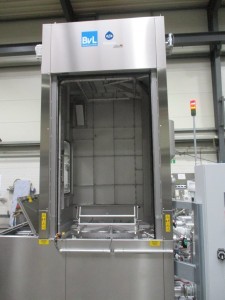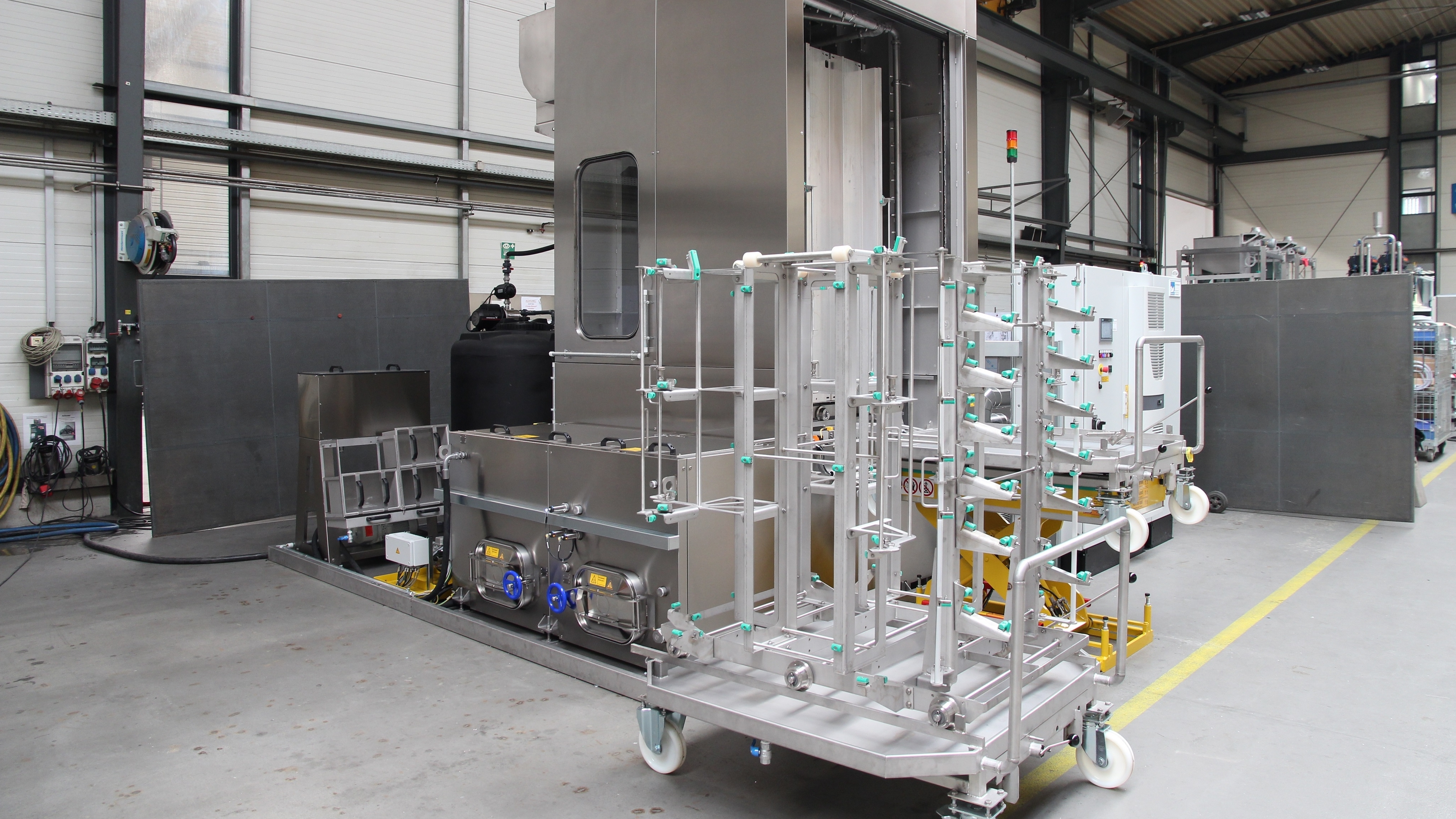When you open the hood of an electric car, you see an open cargo space in front of you. The motor as a drive element is missing and with it the safety it provides for the stability and protection of the occupants.
In order to ensure the safety of passengers and the integrity of the battery in the event of a collision, new elements made of lightweight materials such as aluminum and hybrid materials are used for the rigidity and strength of the body. The front structure of an e-vehicle is completely redesigned and reinforced to compensate for the elimination of the combustion engine.
Aqueous cleaning as an important preparation for bonding and welding processes
Thorough aqueous cleaning is essential to ensure that these new elements can be bonded and welded properly. The components must be free of grease and stains. However, all other hollow profiles that are used to reduce weight and noise must also be thoroughly cleaned inside and out.
Versatile cleaning challenges in e-mobility
Managing Director and owner of BvL Oberflächentechnik GmbH, Bernhard Sievering, reports on the diverse requirements for cleaning in e-mobility: "For many years, we have specialized in reliable and state-of-the-art cleaning solutions in the automotive sector. We are also well positioned in the e-mobility sector. We clean these 'new parts' in continuous or batch operation. Other components for electric vehicles are also cleaned efficiently and reliably with BvL systems. These include battery housings and various elements of drive technology and power electronics, for example."
Practical example for cleaning long body parts
 BvL Ocean turntable system with specialusefulheight for body parts up to 2,200 mm long (extruded profiles)The BvL Ocean 1600 RW 2-Tank cleaning system with a special useful height is suitable for cleaning particularly long body parts, such as extruded profiles.
BvL Ocean turntable system with specialusefulheight for body parts up to 2,200 mm long (extruded profiles)The BvL Ocean 1600 RW 2-Tank cleaning system with a special useful height is suitable for cleaning particularly long body parts, such as extruded profiles.
The BvL engineers have designed and manufactured a special workpiece carrier on which the up to 2,200 mm long body parts are fixed vertically and positioned exactly on the areas to be cleaned. A lifting table is used to raise the workpiece carrier from floor level to machine height. After cleaning by spraying, the parts are rinsed with demineralized water to reduce mineral and cleaner residues before painting.
The recirculating air drying system in the form of a vertical blow-off nozzle covering the entire usable height dries the parts. The rotation of the turntable with the workpiece carrier past the drying nozzle ensures thorough drying on all sides.
The surface tension for paintability of ≥38 mN/m is reliably achieved. Paint adhesion is guaranteed as long as the system parameters remain stable.
BvL Libelle products for greater process reliability
Comprehensive sensors such as the BvL Libelle Fluid Control and Libelle Cleaner Control are used to evaluate and monitor system parameters such as conductivity, pressure and temperature for each batch. The measured values are stored on an integrated data logger. The Libelle products guarantee a high level of quality control and process monitoring.
The BvL Libelle Oil Control Solo measures the part surface to ensure that the components are ready for painting after cleaning. The mobile device can be used to quickly decide whether the component is suitable for the subsequent process.


